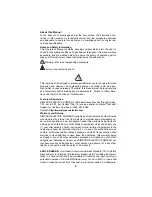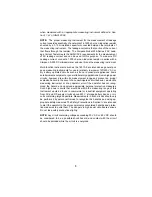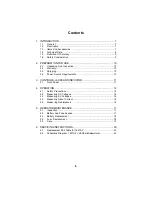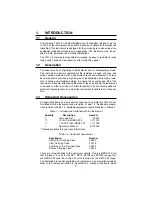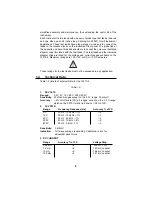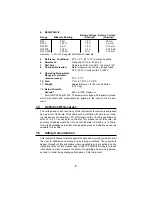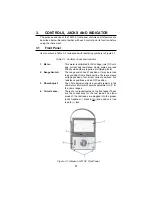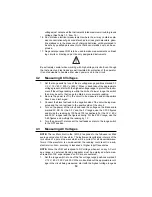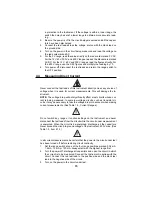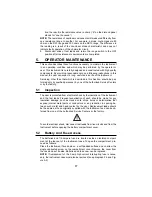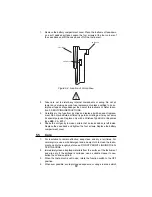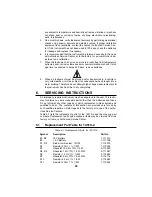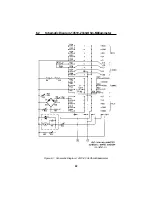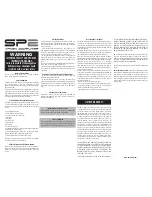
14
voltage must not exceed the Instrument’s rated maximum circuit-to-ground
voltage. (See Table 1-3, item 12.)
16. Do not make electrical measurements where the air may contain explo-
sive concentrations of gas or dust such as in mines, grain elevators, gaso-
line stations or in the presence of charging batteries, until determined to
be safe by qualified personnel. Note that even metallic dust can be ex-
plosive.
17. No general purpose VOM is to be used to make measurements on blast-
ing circuits or blasting caps. Use only designated instruments.
Be extremely careful when working with high voltage circuits. Even though
the Instrument and test leads are well insulated for protection of the operator,
it is not advisable to handle either when power is on in the circuit.
4.2
Measuring DC Voltages
1.
Set the range switch at one of the six voltage range positions marked 0.3
V, 3 V, 12 V, 60 V, 300 V or 600 V. When in doubt about the approximate
voltage present, start with the highest voltage range to protect the Instru-
ment. If the voltage reading is within the limits of a lower range, the switch
then may be set to that range to obtain a more accurate reading.
2.
Be sure the power is off in the circuit to be measured and all capacitors
have been discharged.
3.
Connect the black test lead to the negative side of the circuit being mea-
sured and the red test lead to the positive side of the circuit.
4.
Turn on the power of the circuit and read the voltage on the black scale
marked AC-DC. For the 0.3 V and the 3 V ranges, use the 0-300 figures
and divide the reading by 1000 and 100 respectively. For the 12 V, 60 V
and 300 V ranges read the figures directly. For the 600 V range, use the
0-60 figures and multiply the reading by 10.
5.
Turn the power off, disconnect the test leads and return the range switch
to the OFF position.
4.3
Measuring AC Voltages
NOTE: The rectifier circuit in the 14510-2 responds to the full-wave rectified
average value of an AC waveform. The Instrument is calibrated in terms of the
rms value of a pure sine wave which will be correct for all sinusoidal wave-
forms. If the waveform is non-sinusoidal, the reading could result in a sub-
stantial error. Also, accuracy is lessened at higher input frequencies.
NOTE: Since the VOM will respond to DC voltage when set on any AC volt-
age range, an external blocking capacitor must be employed where mea-
surements of AC superimposed on DC are encountered.
1.
Set the range switch at one of the five voltage range positions marked 3
V, 12 V, 60 V, 300 V or 600 V. When in doubt about the approximate volt-
age in the circuit being measured, start with the highest voltage range as
!
Summary of Contents for 14510-2
Page 1: ...Simpson 14510 2 Volt Ohm Milliammeter OPERATOR S MANUAL...
Page 4: ...4 NOTES...
Page 5: ...5 NOTES...
Page 23: ...23 NOTES...


